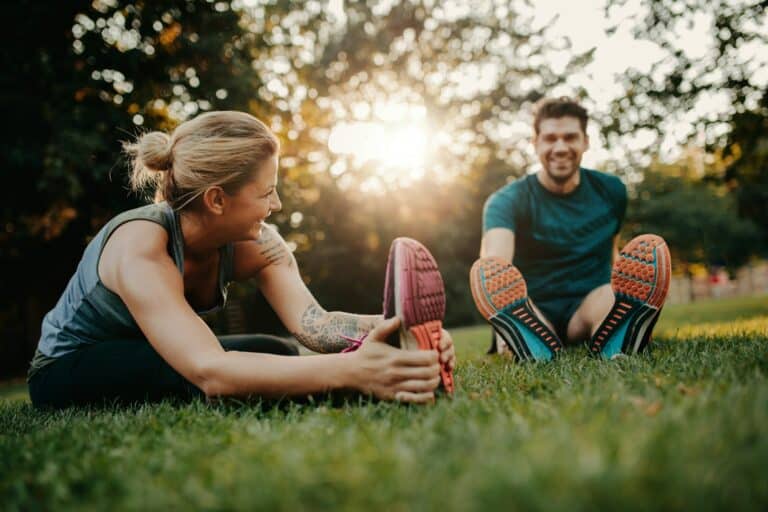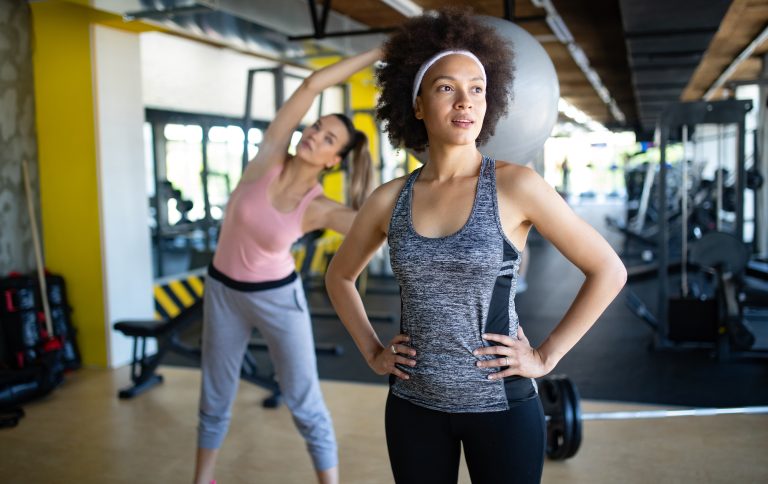In our modern world, adults are constantly plagued with random aches and dull pains. Whether it’s lower back pain from sitting in an office chair all day or tight shoulders from the tensions of everyday life, these random pains can be completely debilitating.
Don’t you wish you could just make it stop?
As it turns out, your muscles’ pliability has a lot to do with keeping them healthy and pain-free! If you’re interested in learning more about pliability and some exercises you can do to help decrease the pain in your life, you’ve come to the right place. Just remember, if you’re experiencing any sort of sharp or shooting pains, you’ll want to check in with your doctor before trying any of the stretches or exercises below.
Pliability vs Flexibility
While you may or may not be familiar with pliability, you’ve likely heard about flexibility before. And while it has long been thought that increasing flexibility was the best way to decrease pain and likelihood of injury, it turns out that idea is a little bit outdated.
By definition, flexibility is the range of motion in a joint. You’re working on improving your flexibility every time you stretch a joint past a comfortable position. Pliability, on the other hand, refers to a muscle’s softness. Now, that’s not to say that pliable muscles are soft to the touch, but rather that they’re able to adapt to any strains placed on them by the body.
Generally speaking, muscles that are pliable are able to carry weight and move through their full range of motion more readily than muscles that are not pliable. Increasing pliability, then, is a great way to increase overall muscular wellness, as well as help keep any annoying aches and pains at bay.
Why Pliable Muscles Are Important
As people get older, they slowly start to lose their range of motion. Because of this, action must be taken in order to keep your muscles and joints healthy, and actively working on muscle pliability is one of the ways that you can do this.
Muscles that are not pliable are more likely to fatigue quickly and are more prone to injury. In some cases, you can tell if a muscle is pliable by feeling it. Does the muscle feel like it’s full of knots and hard to the touch? If so, the pliability of the muscle likely needs to be worked on.
Having pliable muscles is a great way for athletes to improve their performance. However, there are also innumerable benefits that having pliable muscles provides to non-athletic individuals as well. Improving pliability can reduce the tightness and stress that joints are subject to, help prevent injuries and back pain, and has even been shown to help improve daily tasks like reaching, bending, or stooping!
Improving your muscles’ pliability will, in turn, increase your range of motion and flexibility. And it’s not just useful for the muscles that generally get tight, like the neck or shoulders. Pliability training can also be applied to the elbows, wrists, hands, hips, hamstrings, quadriceps, knees, calves, ankles, and feet!
How Can Pliability Be Integrated Into Your Fitness Plan
Whether you work out every day, or you haven’t seen the gym in years, you can work to increase your muscles’ pliability with just a few small adjustments to your day. Just keep in mind that if you’re new to exercise and working out, you’ll want to start out slow to make sure you don’t hurt yourself.
Most people start out working on their pliability with foam or ball rollers. These tools essentially work as self-massagers. Some are spherical in shape, while others look more like cones or rods. To begin, simply place the roller underneath the muscle you’re working on and massage it with the roller. Functionally, this removes blockages that form in the connective tissues of your muscles, helping them heal faster and increasing their pliability.
You can also increase your muscles’ pliability by simply stretching. When you stretch before exercising, you’ll increase your range of motion. In addition, stretching after working out can increase your overall flexibility since your muscles will already be warmed up.
As a general rule of thumb, getting ten minutes of stretching a day will help with your muscles’ overall pliability. Plus, it’s also a great way to improve overall health and muscle strength and reduce the probability of injury.
Specific Exercises To Help With Pliability
As stated above, using a foam or ball roller is the most common way to start working on muscle pliability. But there are a ton of different muscles that these tools can be used on, so knowing where to start can be a bit intimidating.
Rollers can be used on the calves by sitting on the floor with your legs out straight and placing the tool beneath either of your calf muscles. You start by lifting your hips in the air and holding yourself up with your arms. Slowly start to roll the roller the length of your calf muscle, giving extra time and attention to any parts of the muscle that feel extra sore or tight. After about two minutes, switch legs.
You can also use a roller on your hamstrings. To do this, sit on the floor as you would if you were rolling out your calf. Place the roller under one of your hamstrings, and roll back and forth along the muscle. After rolling for about two minutes, you can switch legs.
On the other side of your leg, you can use a roller to increase the pliability of your quads. Instead of getting into a seated position, start in a plank on your elbows and knees. Place the roller underneath either of your quads and then roll up and down the length of the muscle. You can use rhythmic contractions and relaxations to help increase blood flow to the area as you roll. You can switch legs after two minutes.
Rollers can also be used on the inner or outer thigh, especially if this area is tight or sore. For the outer thigh, lay on either side with your elbow on the ground and roller just above the knee. Roll up so that the roller moves to the top of your hip, and then back down again. After about two minutes you can switch sides.
For the inner thigh, start in a plank position as if you’re getting ready to roll out your quadriceps, and lift one leg into a 90-degree position. Place the roller or ball above the knee of the leg you lifted up, using your other leg to keep balanced. Move the roller up and down your thigh, paying extra attention to any especially sore or tender areas. After about two minutes, you can switch sides.
Finally, you can try rolling out your glutes to increase pliability. Starting in a seated position, place the roller beneath one of your glutes. You can roll back and forth, and side to side, focusing on any areas that are tight or sore.
Other than utilizing a roller, there are certain stretches that can help with muscle pliability, and therefore overall muscle wellness. As is with the rollers, knowing where to start with the stretching can be a bit daunting, especially if you’ve never done it before.
To start, you’ll need to understand the difference between dynamic and static stretches. Static stretching is probably what comes to your mind when you think about what stretching is: holding a position just past the point of comfort for an extended period of time. Dynamic stretching, on the other hand, is usually done before workouts and helps to lubricate the joints. Examples of this type of stretching include swinging your arms or legs back and forth across the body.
If you’re looking for a good, dynamic stretch for your legs, you can start with your legs hip-width apart and holding onto something sturdy for balance. Lift your left foot off the floor as far as you can while keeping it straight, and then swing it across the body to the right and back to the left. Swing your leg back and forth at least ten times, around a forty-five-degree angle at most, and then switch sides.
A similar exercise can be done with your arms to increase pliability and fitness. Start with your feet firmly planted on the ground, and begin to swing your arms in front of your body. Criss-cross them as they pass one another, and then swing them back out to the sides.
If you think that static stretches are more up your alley, you can try the following for your upper body. Starting in a standing position with your feet about hip-width apart, inhale and lift your arms out and up above your head. Turn your right-hand palm up and grab your wrist with your left hand. Slowly bend to the left while exhaling, and then hold this position and continue to breathe. Make sure your shoulders are in a neutral position. Hold this for about thirty seconds, and then switch sides.
Static stretches can also be done for the lower body. To do this, start sitting on the ground in a straddle position. Turn your upper body towards your right leg, centering your chest with the line your leg makes. Slowly exhale as you lower your chest toward your knee, reaching for your calf or foot for extra support. After holding this for around twenty to thirty seconds, switch sides. If you’re looking for an even deeper stretch, you can do both sides again.
Conclusion
In recent years, the hunt for flexibility has shifted into a desire for extra pliability, and the reasons why are clear. Pliable muscles help promote enhanced health and fitness and will ward away any aches or pains that come along with everyday life.
If you’re looking to increase your pliability, you’ll most likely want to start by using a foam roller or ball. Then, once you’re ready, you can implement around ten minutes of stretching a day to hammer home the benefits of pliability. Overall, increasing your muscles’ pliability can be a great way to improve overall wellness and keep your body healthy and feeling great well into adulthood.





